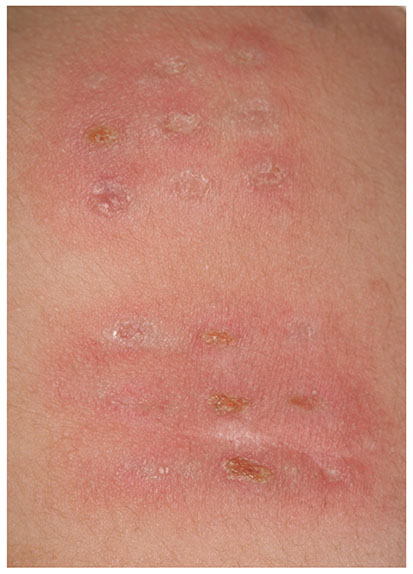Korean Circ J.
2015 Nov;45(6):510-515. 10.4070/kcj.2015.45.6.510.
Early Detection of Kawasaki Disease in Infants
- Affiliations
-
- 1Department of Pediatrics, Dongguk University School of Medicine, Gyeongju, Korea. lds117@dongguk.ac.kr
- KMID: 2223790
- DOI: http://doi.org/10.4070/kcj.2015.45.6.510
Abstract
- BACKGROUND AND OBJECTIVES
This study aimed to investigate the clinical characteristics of infantile Kawasaki disease (KD), and to evaluate early diagnostic features of KD in febrile infants.
SUBJECTS AND METHODS
We retrospectively reviewed the medical records of 64 KD patients from January 2010 to October 2014. There was an analysis of the clinical, laboratory data of the infants versus children groups. Furthermore, the clinical and laboratory data of infantile KD patients were compared with 16 infants who were admitted for other acute febrile diseases.
RESULTS
A total of 64 patients with KD were identified; 20 (31.3%) were infants; 44 (68.8%) were >1 year old children. Incomplete KD was much more common in infants (n=13, 65.0%) than in children group (n=14, 31.8%) (p=0.013). The infants were characterized by significantly higher rates of inflammatory changes at the Bacille Calmett-Guerin (BCG) inoculation site (p<0.001), but lower rates of changes in the extremities (p=0.029) and cervical lymphadenopathy (p=0.006). The serum levels of platelet after 1 week (p=0.005), C-reactive protein (p=0.038), and N-terminal pro-brain natriuretic peptide (NT-proBNP) (p=0.026) were all significantly higher in the infants group. Comparing the infants with KD versus the other acute febrile diseases, there were significantly higher serum levels of erythrocyte sedimentation rate (p=0.002), C-reactive protein (p=0.046) and NT-proBNP (p=0.001) for the infants with KD group.
CONCLUSION
BCGitis and higher levels of NT-proBNP can be helpful for early diagnosis of the incomplete KD in infants, and may be a good predictor of KD in acute febrile infants, when combined with other acute phase reactants.
MeSH Terms
Figure
Reference
-
1. Newburger JW, Takahashi M, Gerber MA, et al. Diagnosis, treatment, and long-term management of Kawasaki disease: a statement for health professionals from the Committee on Rheumatic Fever, Endocarditis and Kawasaki Disease, Council on Cardiovascular Disease in the Young, American Heart Association. Circulation. 2004; 110:2747–2771.2. Honkanen VE, McCrindle BW, Laxer RM, Feldman BM, Schneider R, Silverman ED. Clinical relevance of the risk factors for coronary artery inflammation in Kawasaki disease. Pediatr Cardiol. 2003; 24:122–126.3. Manlhiot C, Yeung RS, Clarizia NA, Chahal N, McCrindle BW. Kawasaki disease at the extremes of the age spectrum. Pediatrics. 2009; 124:e410–e415.4. Council on Cardiovascular Disease in the Young, Committee on Rheumatic Fever Endocarditis, and Kawasaki Disease, American Heart Association. Diagnostic guidelines for Kawasaki disease. Circulation. 2001; 103:335–336.5. Ayusawa M, Sonobe T, Uemura S, et al. Revision of diagnostic guidelines for Kawasaki disease (the 5th revised edition). Pediatr Int. 2005; 47:232–234.6. Seo JH, Yu JJ, Ko HK, Choi HS, Kim YH, Ko JK. Diagnosis of incomplete kawasaki disease in infants based on an inflammation at the bacille calmette-guérin inoculation site. Korean Circ J. 2012; 42:823–829.7. Yoshimura K, Kimata T, Mine K, Uchiyama T, Tsuji S, Kaneko K. N-terminal pro-brain natriuretic peptide and risk of coronary artery lesions and resistance to intravenous immunoglobulin in Kawasaki disease. J Pediatr. 2013; 162:1205–1209.8. Olivieri L, Arling B, Friberg M, Sable C. Coronary artery Z score regression equations and calculators derived from a large heterogeneous population of children undergoing echocardiography. J Am Soc Echocardiogr. 2009; 22:159–164.9. Japan Kawasaki Disease Research Committee. Report of subcommittee on standardization of diagnostic criteria and reporting of coronary artery lesions in Kawasaki disease. Tokyo: Ministry of Health and Welfare;1984.10. Kawasaki T. Acute febrile mucocutaneous syndrome with lymphoid involvement with specific desquamation of the fingers and toes in children. Arerugi. 1967; 16:178–222.11. Kato H, Sugimura T, Akagi T, et al. Long-term consequences of Kawasaki disease. A 10- to 21-year follow-up study of 594 patients. Circulation. 1996; 94:1379–1385.12. Chang FY, Hwang B, Chen SJ, Lee PC, Meng CC, Lu JH. Characteristics of Kawasaki disease in infants younger than six months of age. Pediatr Infect Dis J. 2006; 25:241–244.13. Chuang CH, Hsiao MH, Chiu CH, Huang YC, Lin TY. Kawasaki disease in infants three months of age or younger. J Microbiol Immunol Infect. 2006; 39:387–391.14. Hsieh YC, Wu MH, Wang JK, Lee PI, Lee CY, Huang LM. Clinical features of atypical Kawasaki disease. J Microbiol Immunol Infect. 2002; 35:57–60.15. Perrin L, Letierce A, Guitton C, Tran TA, Lambert V, Koné-Paut I. Comparative study of complete versus incomplete Kawasaki disease in 59 pediatric patients. Joint Bone Spine. 2009; 76:481–485.16. Dajani AS, Taubert KA, Gerber MA, et al. Diagnosis and therapy of Kawasaki disease in children. Circulation. 1993; 87:1776–1780.17. Sinha R, Balakumar T. BCG reactivation: a useful diagnostic tool even for incomplete Kawasaki disease. Arch Dis Child. 2005; 90:891.18. Chalmers D, Corban JG, Moore PP. BCG site inflammation: a useful diagnostic sign in incomplete Kawasaki disease. J Paediatr Child Health. 2008; 44:525–526.19. Uehara R, Igarashi H, Yashiro M, Nakamura Y, Yanagawa H. Kawasaki disease patients with redness or crust formation at the Bacille Calmette-Guérin inoculation site. Pediatr Infect Dis J. 2010; 29:430–433.20. Lai CC, Lee PC, Wang CC, Hwang BT, Meng CC, Tsai MC. Reaction at the bacillus Calmette--Guérin inoculation site in patients with Kawasaki disease. Pediatr Neonatol. 2013; 54:43–48.21. Plantin P, Blayo M, Dupré D, Schoenlaub P. BCG reactivation: a rare but specific sign of Kawasaki disease. Presse Med. 1998; 27:716.22. Mukoyama M, Nakao K, Saito Y, et al. Human brain natriuretic peptide, a novel cardiac hormone. Lancet. 1990; 335:801–802.23. Hunt PJ, Yandle TG, Nicholls MG, Richards AM, Espiner EA. The amino-terminal portion of pro-brain natriuretic peptide (Pro-BNP) circulates in human plasma. Biochem Biophys Res Commun. 1995; 214:1175–1183.


